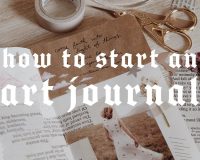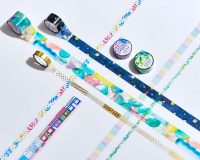
There isn’t one prolific creator of any kind that I know that hasn’t abided by the policy of carrying a notebook. I have stacks of Moleskine notebooks on my bookshelves. All the projects, books, and ideas that I’ve turned into reality started in the pages of my notebooks.
- If you let it, a notebook can become a platform for your imagination.
- It can give you the opportunity to rewrite the story of your life.
- It can enable you to create more than you consume
In his amazing collection of essays The Life and Times of a Remarkable Misfit, my friend AJ Leon says the following:
I use a tiny Moleskine as my idea notebook. I jot down every business idea, prospect idea, project idea, potential blog post, poem, art or social project, whatever. Every single thing I’ve done in the last four years can be traced to one of my notebooks.
In his piece on advice for recent graduates, Austin Kleon said the following:
Carry your journal around with you and write in it all the time: make notes in between job interviews, doodle while you’re watching Netflix, daydream about what you want out of life, etc. Any old notebook and pen will do, but if you have $10 or a generous parent, you can grab the journal I made.
Richard Branson carries a notebook.
Ryan Holiday has written about the value of a commonplace book.
If you’ve ever met Sarah Kathleen Peck in person, she’s always scribbling something in a notebook. (You can see her process below in this animated short)
I can personally trace every creative project I’ve worked on, whether it’s a blog post, book chapter, or book to the pages of one of my moleskine notebooks. The discipline of capturing your ideas significantly increases the likelihood that you’ll follow through on them. My notebooks and my pens are essential tools in my creative process. They fuel my practice of writing 1000 words a day. Rather than starting my day on the internet and damaging my brain, I start with pen and paper in a calm and reflective state. So why exactly should you carry a notebook.
1. Ideas Emerge at Odd Times
Like falling in love, moments that announce themselves as your subject are rare, and there’s magic to them. Ignore them at your own peril- Dani Shapiro
If you haven’t noticed, ideas don’t always show up according to our schedule. The muse is a fickle mistress who makes appearances at her own convenience.
- Ideas emerge when we’re at dinner and someone says something
- Ideas emerge when we’re at the gym, surfing the perfect wave or flying down a mountain on a snowboard
- Ideas emerge when you’re sitting in LA traffic wondering why the hell anybody in their right mind would voluntarily drive in this city
If you’re going to consistently come up with ideas to write about or do something with, you have to be able to capture them regardless of when they show up. Or in the words of Allen Ginsberg, “if the muse comes to your bedside don’t tell her you’ll f#$# her later.”
2. Ideas don’t show up fully formed
Ideas are like babies. They don’t show up in our lives fully formed. They need time to bake, grow and evolve. They have to be nurtured and care for. When we don’t put them down in our notebooks, it’s like letting our kids play in traffic in the middle of a busy intersection. It’s likely that they’ll just die.
On a related note- if you struggle with habits, I’ve put a guide together on optimizing productivity & creativity. Sign up for my newsletter here and you’ll receive it shortly.
3. Notebooks are fertile soil for creative seeds
Creative success requires us to plant seeds and play the infinite game. A notebook is fertile soil in which you can plant those seeds. While you could plant the same seeds on your computer, just think of all the other seeds that have been planted there. The likelihood of the seed bearing fruit in a digital wasteland is lessened.
In a recent article
said the following.
Your thoughts are the blueprint of the life you are building one day at a time. When you learn to channel your thinking — both consciously and subconsciously — you create the conditions that make the achievement of your goals inevitable.
In his book Presentation Zen, Garry Reynold tells the following story about visiting a designer at Apple
Most professional designers- even young new media designers who’ve grown up on computers- usually do much of their planning and brainstorming on paper.
This became very clear to me one day at Apple when I visited a senior director for one of the creative teams on the other side of the Apple campus to get his input on the project we were working on. He said he had sketched out a lot of ideas the wanted to show me. I assumed that he had prepared some slides or a movie or at least printed out some color images in illustrator or Photoshop to show me. But when I arrived at his office, I found that the beautiful Apple Cinema Display on his desk was off. (I learned later at this talented creative director worked forays without ever turning on his Mac)
I always write by hand before I ever turn on my computer. It allows you to limit the inflow, and there’s tremendous power to pen and paper in an increasingly digital world.
Are you struggling with managing your time and attention?
I’ve put together a list of interviews with productivity experts who can teach you how to master your focus. Just click here.
What Should You Put in the Notebook?
Sometimes people get tripped up because they have no idea what they’ll put in their notebooks. Other times they don’t want to ruin something as beautiful as a Moleskine with their chicken scratch. But as Amber Rae once said to me “Fall in love with your chicken scratch. Accumulate pages not judgments.” There are no hard and fast rules as to what should go in the pages of your notebook.
Any of the following can be put into your notebook.
- Quotes
- Ideas
- Thoughts
- Sketches
The surprisingly simple act of carrying a notebook can change your life and allow you to become the author of your narrative.
If you enjoyed this article, you’d love my newsletter. You’ll receive a weekly article like this as well as immediate access to a swipe file, where you’ll get my best tips on honing your productivity & creativity, as well as a guide on finding the courage to carve your own path, rather than following someone else’s footsteps.







